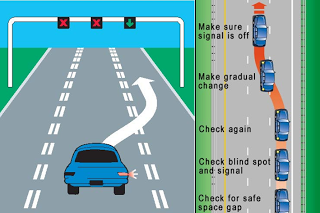
Pro-tip - keep your eyes open while doing this
One of my favorite podcasts is '99% Invisible' by Roman Mars. It's about design, and about the consequences for good and ill design has on our day to day life. You should listen to it, because it is awesome.An older episode fell into my ball park a little bit, and I thought it was a nice idea worth repeating. It's about the steering wheel, and what we learn when we learn to use them. The moral of the story is this: when we learn, we don't acquire internal models of the features of a task which we can then access later on. Instead, we learn how to interact with a given task dynamic and how to use the information made available by that task dynamic.
The set up is this:
If I asked you to close your eyes and mimic the action of using one of the simple human interfaces of everyday life, you could probably do it. Without having a button to push, you could close your eyes and pretend push a button, and that action would accurately reflect the action of pushing a real button[1]. The same goes for flipping a switch or turning a door knob. If you closed your eyes and faked the movement, it would sync up with its real world use.[1] ADW Note: This is not particularly true. Actions performed without the use of the typically present information (as is the case when miming) are generally not identical to the real action. This is what makes a good mime quite impressive. That said, you could generate an action in the ballpark.
Now if I asked you to do the same with a car’s steering wheel, you’d think you’d be able to describe steering accurately and mime the correct movements with your hands in the air, but you’d be wrong. Very, very wrong. You’d probably kill a bunch of imaginary people.
The podcast features an interview with Steve Cloete who has done research on this topic with his colleague Guy Wallis (e.g. Cloete & Wallis, 2009; Wallis et al, 2002, 2007). The basic finding is that when asked to mime a lane change, people turn the wheel but fail to turn it back to straighten the car. When actually driving or in a simulator, people happily perform both elements of the maneuver. The researchers state (correctly, I think) that this means people have not internalised the dynamics of the steering wheel and the car. They don't have access to an internal representation of the correct action; instead, what they've learned to do is to move so as to produce a particular pattern of visual information (flow across the retina in one then the other direction). We move so as to produce certain perceptual consequences, and without those consequences available we don't reproduce the movement that we learned.
One fun study (unpublished, as far as I can tell) involved people learning to do a lane change in an actual car while blindfolded. They drove down a test road with a person guiding them verbally and over the course of the study they learned to change lanes correctly. Without vision, they initially did the incorrect mime version where they only turned one way, but they eventually learned to do the full maneuver. However, this didn't transfer to the mime task. People had learned to use non-visual information to control the lane change, but this wasn't available when miming because it was created by the dynamics of the car.
Roman Mars finds this lack of transfer amazing; all this training in blindfolded driving and you still can't mime the lane change! But to me, this was always going to be the case. People don't learn internal models of the world; they learn how to interact with their environments and this depends critically on perception and information. No information, no successful action, and if the information doesn't overlap then no transfer either. This result is a lovely demonstration, I think.
Speaking of lovely demonstrations...PsychScientists Jnr is an excellent pretend driver :)
References
Cloete S.R. & Wallis G. (2009). Limitations of feedforward control in multiple-phase steering movements, Experimental Brain Research, 195 (3) 481-487. DOI: 10.1007/s00221-009-1813-6
Wallis G., Chatziastros A. & Bülthoff H. (2002). An Unexpected Role for Visual Feedback in Vehicle Steering Control, Current Biology, 12 (4) 295-299. DOI: 10.1016/S0960-9822(02)00685-1
Wallis G., Chatziastros A., Tresilian J. & Tomasevic N. (2007). The role of visual and nonvisual feedback in a vehicle steering task., Journal of Experimental Psychology: Human Perception and Performance, 33 (5) 1127-1144. DOI: 10.1037/0096-1523.33.5.1127
